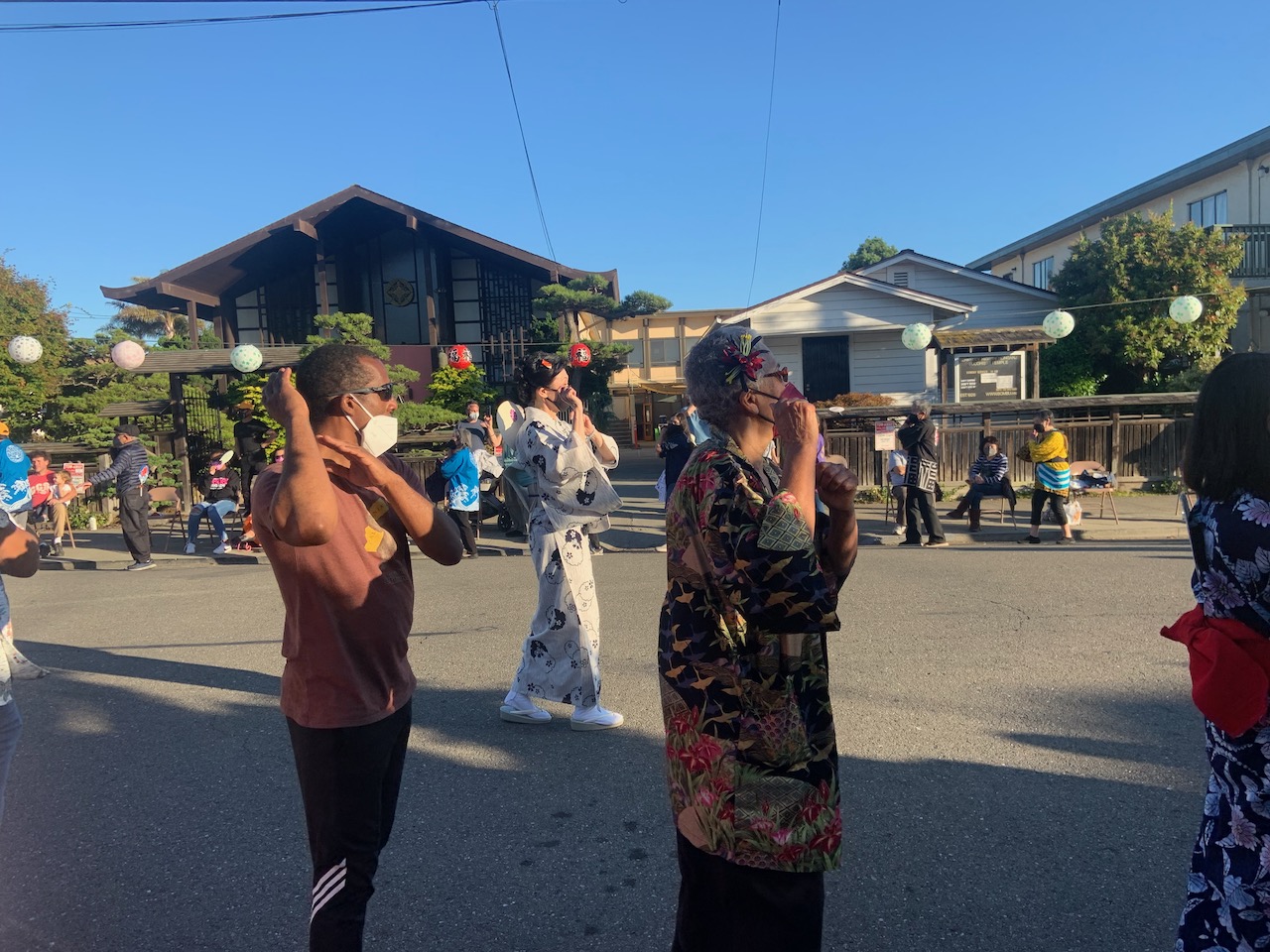
Dancers and music are returning this summer at Higashi Honganji temples for the annual Obon observance.
In Berkeley, California, last Saturday, more than a hundred dancers came out and danced to Japanese music, participating in “Bon odori,” traditional Japanese folk dancing in observance of Obon. The Los Angeles Betsuin temple will host its Bon dance at a private ranch featuring dancing, music and food in Ventura county on July 30. Attendance is limited because of Covid precautions and the event has sold out. Usually the event is held at the temple in Los Angeles’s Little Tokyo district.
The pandemic forced the suspension of the festive dancing the past two years, but this summer it’s making a comeback. Also last weekend, San Jose’s Nishi Honganji temple re-started it’s Bon dancing, which in the past has attracted more than a thousand dancers. Hundreds turned out, enjoying traditional foods and music.
Many people associate Obon with Japanese dancing, when crowds of people wear traditional clothes, line up in circles in front of temples and happily dance to folk songs. However, there’s a deeper meaning.
As a Buddhist tradition, Obon is a time to reflect on those people who have passed away, our loved ones and our ancestors, and how our connection to them has shaped our lives. The Obon service is a memorial in memory of those people.
Obon comes from the Ullambana sutra (“Urabon” in Japanese), which tells the story of Mogallana, who envisions his recently deceased mother suffering in a hell-like realm. Mogallana was the Buddha’s disciple, adept at meditation. The Buddha advised him to make offerings to monks in his mother’s memory, which he does, after which his mother is liberated to the Pure Land. Mogallana’s heart fills with joy and he begins dancing.
Our Higashi Honganji temples observe Obon, typically holding a Bon dance, followed the next day by a memorial service. That same weekend, many people visit cemeteries and leave flowers for their loved ones.
The Obon dance has become a popular activity, joined by many non-Buddhists who enjoy it as a kind of Japanese cultural activity. Its essence, however, remains an expression of the Buddha’s teachings. The dance is free and open to all.
In Berkeley, the Nishi Honganji temple, called ,Berkeley Buddhist Temple, and Berkeley Higashi Honganji, have held a joint Bon dance for more than 30 years, since the 1980s, alternating locations. Each with a relatively small sangha (congregation), they came together to keep their respective Obon traditions alive. The dance has become a community event, attracting many non-members and non-Buddhists, who participate as a Japanese cultural activity and fun summertime event.
Berkeley’s event this year attracted slightly fewer dancers than in the past, a pleasant surprise considering that the limited schedule of just two practices attracted only a few dozen people. It was an abbreviated event with a reduced number of songs, limited attendance and masks required. Once again, the head teacher was Madame Michisuya Hanayagi, who has led the dancers for several years.
In the first year of the pandemic 2020, a joint virtual Berkeley Bon Dance was held online. You can see it here:
Thankfully, this lively activity enjoyed by many people has returned, a sign that life at our temples is gradually and hopefully returning to normal.
-Rev. Ken Yamada, editor of Higashi Honganji’s Shinshu Center of America

